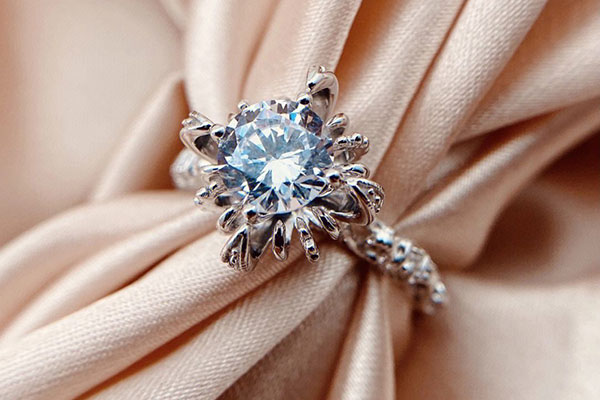The liver meridian is one of the twelve meridians,flow between one and three in the morning. There are 14 acupoints on one side of the meridian (total 28 acupoints on the left and right sides). which is commonly used for low back pain,sternal rib pain,abdominal pain, hernia, dry throat, nocturnal emission, irregular menstruation, headache, dizziness, arthralgia of lower limbs and other symptoms.
Liver meridian pathway
The pathway of the liver meridian: Starting from the dorsum of the big toe (Da Dun),along the inner back of the foot (Xingjian, Taichong), 1cun away from the medial malleolus (Zhongfeng), and going up the inner calf (Huisanyinjiao,pass through Ligou, Zhongdu, and Xiguan), after across the Spleen Meridian of the Foot-Taiyin at 8 cun from the medial malleolus, reach the inner side of the upper leg behind knee(Ququan), along the inner thigh (Yinbao, Zuwuli, Yinlian), and surround the pubic area and reach the lower abdomen (Jimai, Huichongmen, Fushe, Qugu, Zhongji, Guanyuan), next to the stomach, belongs to the liver, and connect to the gallbladder (Zhangmen, Qimen);
Branch
Eye branch: from eye to the deep layer of the cheek, descending and encircling the lips.
Liver branch: Separate from the liver, pass through the diaphragm, flow upward into the lungs, and connect with the lung meridian of the hand-Taiyin.
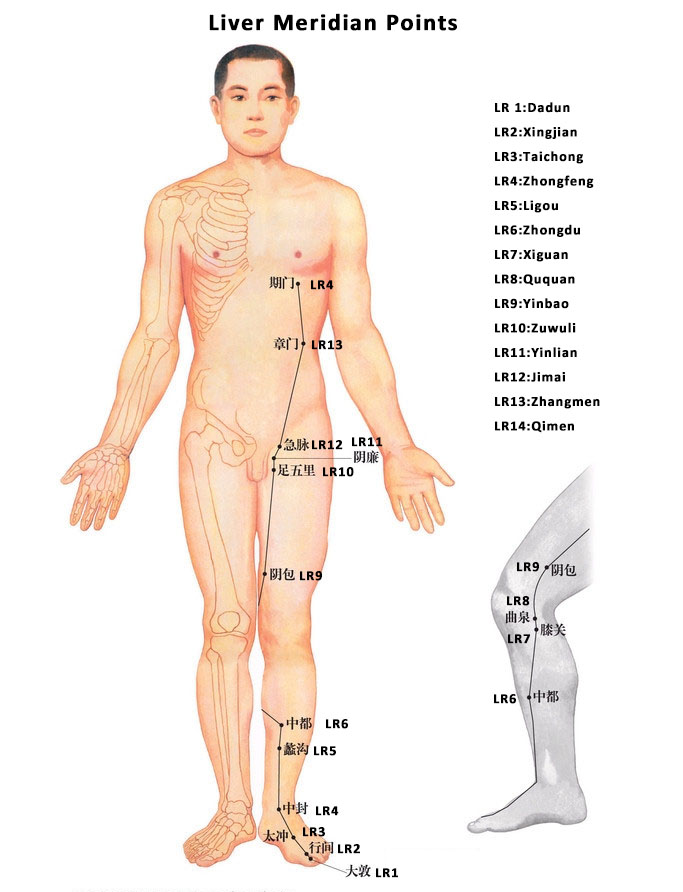
What is the liver meridian used for?
Hepatobiliary diseases, genitourinary system, nervous system,etc,such as: chest and hypochondriac pain, lower abdominal pain, hernia, enuresis, poor urination, nocturnal emission, irregular menstruation, headache and dizziness, lower limb arthralgia and other symptoms.
Visceral relationship
It belongs to the liver, connects the gallbladder, and related to the lung, stomach, kidney, and brain.
Liver meridian points
There are 14 points on one side of the liver meridian, 11 points on the inner side of the lower limbs, and 3 points on the chest and abdomen.
#1.Dadun (LR 1)
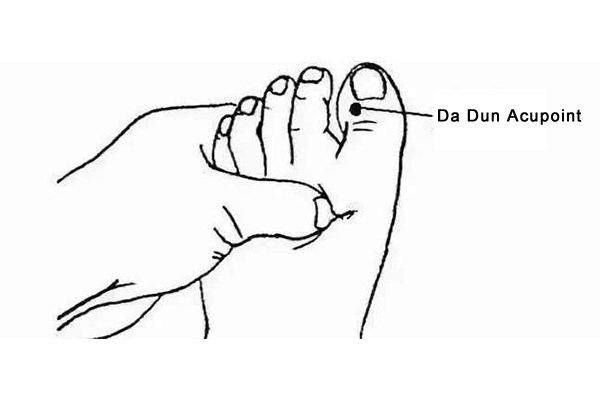
on the lateral side of the the big toe, .1 cun from the corner of the nail.
Indications:hernia, abdominal pain, enuresis, obliteration, five types of stranguria, hematuria and other urinary system diseases; menstruation Irregularity, uterine bleeding, vaginal contraction etc other menstrual diseases.
More: LR 1 acupoint
#2.Xingjian(LR 2)
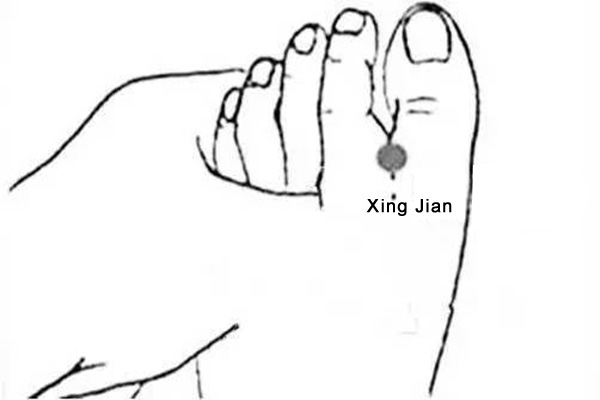
on the dorsum of the foot between the 1st and 2nd toes, proximal to the margin of the web at the junction of the red and white skin.
Indications:clearing liver fire-extreme irritability, red face/eyes/tongue,clearing heart from the Lower Jiao-burning urination,lack of Qi flow to the extremities (cold hands/feet).
More: LR2 acupoint
#3.Taichong (LR 3)
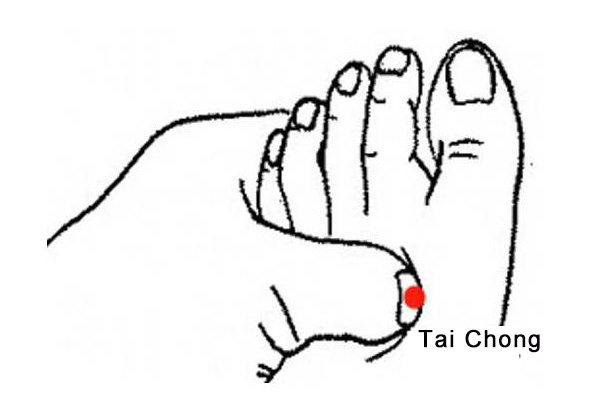
on the dorsum of the foot in a depression distal to the junctions of the 1st and 2nd metatarsal bones.
Indications:stress, lower back pain, high blood pressure, menstrual cramps, limb pain, insomnia and anxiety.
More: LR 3 acupoint
#4.Zhongfeng (LR 4)
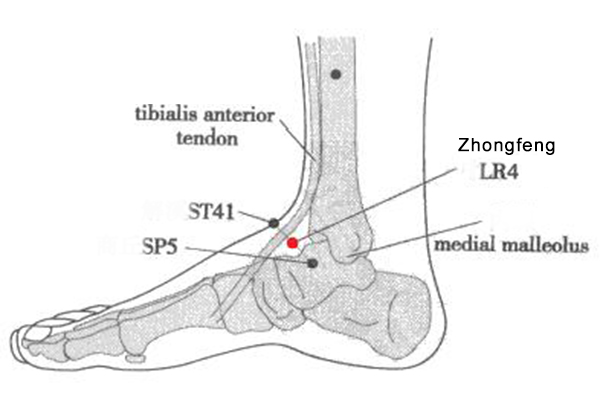
on anterior to the medial malleolus, midway between SP 5 and ST 41, in a depression on the medial side of the tendon of tibialis anterior.
Indications:hernia, vaginal contraction, penile pain, spermatorrhea, difficulty urinating, low back pain, abdominal pain, internal malleolus swelling and pain.
More:LR 4 acupoint
#5.Ligou(LR 5)
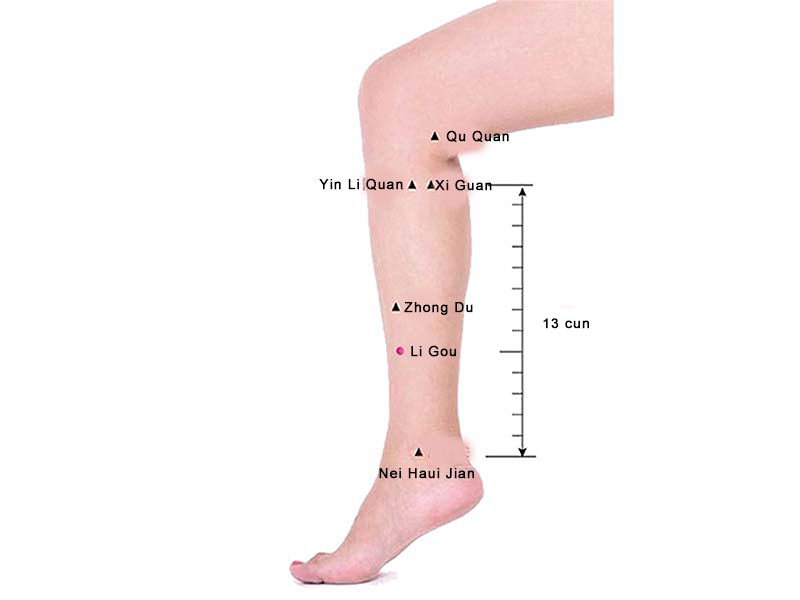
on 5 cun above the tip of the medial malleolus on the midline of the surface of the tibia.
Indications:irregular menstruation, endometritis, functional uterine bleeding, urinary obstruction, and hernia.
More:LR 5 acupoint
#6.Zhongdu (LR 6)
on 7 cun above the tip of the medial malleolus on the midline of the medial surface of the tibia.
Indications: irregular menstruation, metrorrhagia, vaginal discharge, hernia, abdominal pain, spermatorrhea, diarrhea, etc.
More:LR 6 acupoint
#7.Xiguan(LR 7)
on 1 cun posterior to SP 9, posterior and inferior to the medial condyle of the tibia in the upp[er portion of the medial head of the gastrocnemius muscle.
Indications:knee pain, athlete’s foot, paralysis of lower limbs etc.;
More:LR 7 acupoint
#8.Ququan (LR 8)
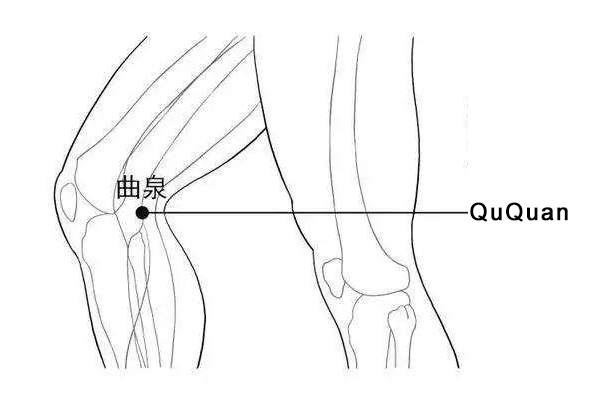
At the medial end of the transverse popliteal crease, posterior to the medial epicondyle of the tibia, in a depression on the anterior border of the insertions of semimembraneous and semitendoneous, with the knee flexed.
Indications:regulating irregular menstruation, dysmenorrhea, nephritis, knee joint pain and so on.
More:LR 8 acupoint
#9.Yinbao (LR 9)
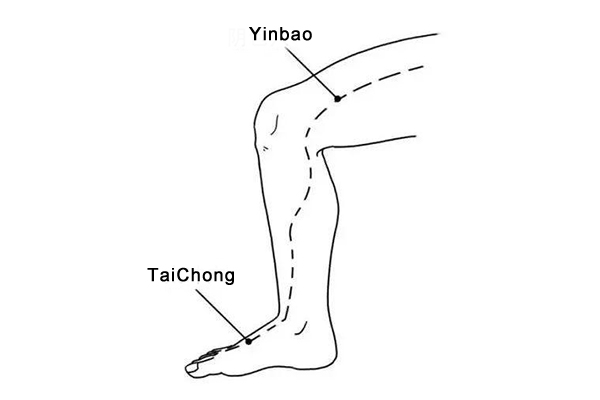
4 cun above the medial epicondyle of the femur, between vastus medialis and sartorius.
Indications:irregular menstruation, enuresis, difficulty urination, and the front of the thigh pain caused by lumbar disc herniation.
More:LR 9 acupoint
#10.Zuwuli(LR 10)
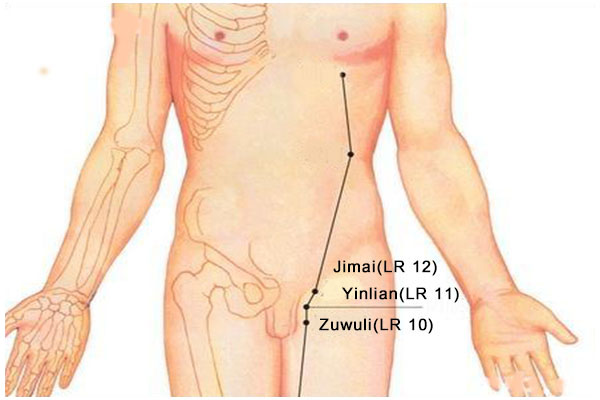
3 cun below ST 30 at the proximal end of the thigh and lateral border of adductor longus (1 cun below LR11).
Indications: pain in lateral lower abdomen, impaired urination and testicular swelling and pain;
More:LR 10 acupoint
#11.Yinlian(LR 11)
2 cun below ST 30 at the proximal end of the thigh and on the lateral border of adductor longus.
Indications: irregular menstruation, vaginal discharge, vulvar itching, inner thigh pain, lower limb paralysis, etc.
More:LR 11 acupoint
#12.Jimai(LR 12)
Lateral to the pubic tubercle, lateral and inferior to ST 30, in the inguinal groove where the femoral artery is palpable, 2.5 cun lateral to the anterior midline.
Indications:lower abdominal pain, irregular menstruation, uterine prolapse, hernia, penile pain, leg pain, etc.
More:LR 12 acupoint
#13.Zhangmen(LR 13)
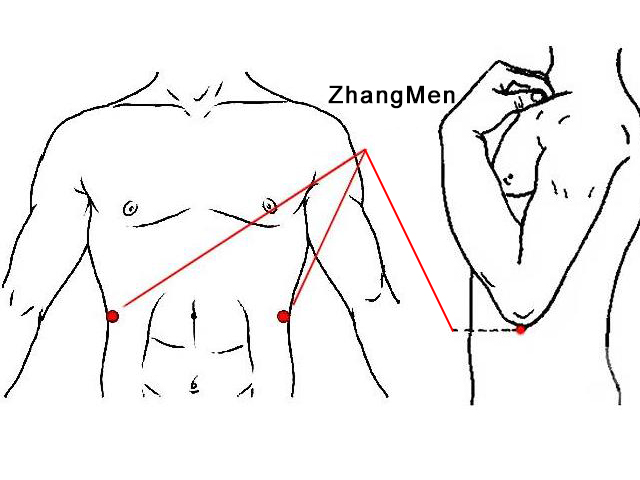
On the lateral side of the abdomen below the free end of the 11th rib.
Indications:abdominal pain, bloating, bowel, diarrhea, vomiting and other gastrointestinal syndromes; hypochondriac pain, jaundice, hepatosplenomegaly and other liver and spleen disease.
More:LR 13 acupoint
#14.Qimen(LR 14)
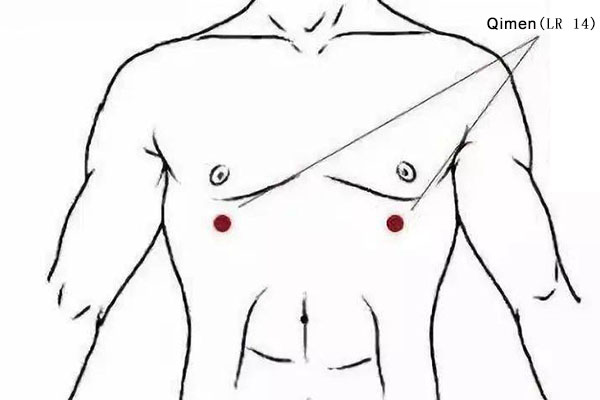
On the mamillary line, directly below the nipple, 4 cun lateral to the AML in the 6th ICS.
Indications:fullness in chest and rib cage, vomiting, hiccup, soreness, abdominal distension, diarrhea, and acute mastitis.
